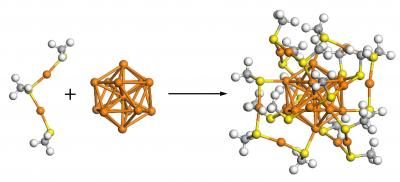Bayer Early Excellence in Science Award 2010: EUR 30,000 for young research scientists
The winners of the Bayer Early Excellence in Science Award 2010 have been announced. The prizes, each worth EUR 10,000, have been awarded by an independent scientific committee of the Bayer Science & Education Foundation. The Bayer foundation presents the Bayer Early Excellence in Science Award to talented young scientists in the early stages of their academic careers. This is the second year the award has been made.
This new international prize was first presented in 2009. It is awarded annually in the three categories biology, chemistry and materials. To be eligible for the Bayer Early Excellence in Science Award, candidates must have completed their doctorate within the last five years. The selection is made on the basis of the originality and quality of candidates’ research and the significance of this work for the respective award category.
Biomimetics: Tailor-made solutions from the world of biology for technical challenges
Dr. Andreas Walther from Aalto University in Helsinki / Finland receives the Bayer Early Excellence in Science Award 2010 in the materials category for the development of innovative, pearlescent biomimetic materials that exhibit impressive properties in terms of their mechanical stability and flame retardance. This makes them very interesting for use in maritime, aviation and aerospace applications. A new production process enables the cost-effective manufacture of hybrid materials thanks to the self-organizing properties of the individual components.
Organometallic catalysis: A precise and efficient tool for preventing by-products
To produce complex products such as natural and active substances, it is often necessary to activate carbon atoms and trigger specific chemical transformations. Prof. Nicolai Cramer from École polytechnique fédérale de Lausanne (EPFL) in Switzerland receives the Bayer Early Excellence in Science Award 2010 in the chemistry category for his in-depth developments and research into new catalytic organometallic reactions for activation of carbon-hydrogen and carbon-carbon bonds.
G proteins: New strategies for treating diseases and illnesses such as cancer and flu
Dr. Oliver Daumke from the Max Delbrück Center for Molecular Medicine in Berlin receives the Bayer Early Excellence in Science Award 2010 in the biology category for his contributions to the understanding of the structure and function of GTP-binding (G) proteins. G proteins can act as molecular switches that control growth signals in biological cells. Other G proteins function as molecular motors that deform cellular membranes. The group headed by Dr. Daumke investigates the differences and similarities between these two classes of G proteins.
Topics
Organizations
Other news from the department science
These products might interest you

Anopore™ by Cytiva
Precise filtration made easy with Anopore inorganic membranes
The aluminum oxide filter membrane that can increase the purity or yield of your analyte

Hahnemühle LifeScience Catalogue Industry & Laboratory by Hahnemühle
Wide variety of Filter Papers for all Laboratory and Industrial Applications
Filtration Solutions in the Life Sciences, Chemical and Pharmaceutical Sectors

Get the chemical industry in your inbox
By submitting this form you agree that LUMITOS AG will send you the newsletter(s) selected above by email. Your data will not be passed on to third parties. Your data will be stored and processed in accordance with our data protection regulations. LUMITOS may contact you by email for the purpose of advertising or market and opinion surveys. You can revoke your consent at any time without giving reasons to LUMITOS AG, Ernst-Augustin-Str. 2, 12489 Berlin, Germany or by e-mail at revoke@lumitos.com with effect for the future. In addition, each email contains a link to unsubscribe from the corresponding newsletter.



























































